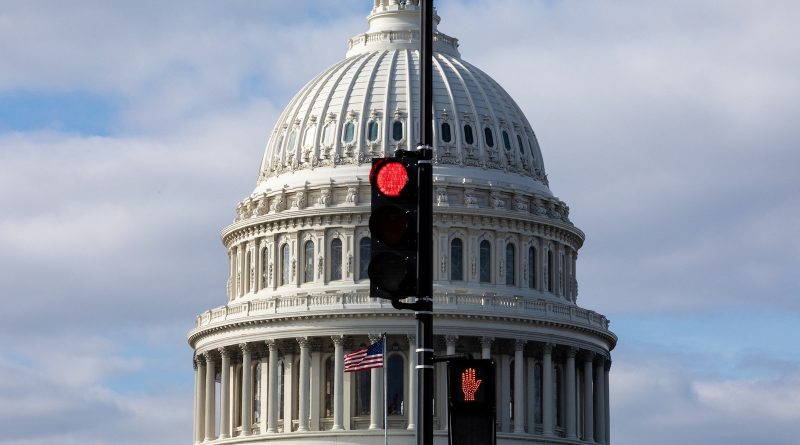What is the debt ceiling and can a default have no consequences, as Trump claims?
President-elect Donald Trump recently turned the spotlight on the U.S. debt ceiling, making it a central issue in government funding discussions. On Wednesday, Trump rejected a bipartisan funding deal negotiated by House Speaker Mike Johnson, insisting that lawmakers must raise the debt ceiling as part of the process.
In a Thursday interview with ABC News’ Jonathan Karl, Trump raised eyebrows by downplaying the potential fallout of a government default. “Nobody really knows. It means nothing, but psychologically, it may mean a lot, right? In other words, it doesn’t have a real meaning other than you’ve violated something,” Trump stated. He added that the outcomes could range from being a minor issue to triggering something as catastrophic as the Great Depression of 1929.
While Trump appeared to dismiss the seriousness of a default, economic experts strongly disagree, emphasizing that breaching the debt ceiling would almost certainly lead to devastating financial consequences.
Economic Experts’ Concerns
Treasury Secretary Janet Yellen has repeatedly warned lawmakers about the grave consequences of failing to raise the debt ceiling. During a 2021 standoff, she described a potential default as “disastrous” for the American economy, global financial markets, and millions of families whose financial security would be jeopardized by delayed payments.
Yellen emphasized that raising the debt ceiling is “necessary to avert a catastrophic event for our economy.” Economic analysts, including those at Moody’s Analytics, have echoed these concerns. In 2023, Moody’s estimated that a prolonged debt ceiling breach could result in economic consequences similar to the 2008 financial crisis.
Among the potential impacts, they projected a loss of over 7 million jobs, a 20% decline in stock prices, and a $10 trillion reduction in household wealth. These outcomes would ripple through the economy, harming individuals and businesses alike.
What is the Debt Ceiling?
The debt ceiling is a legal cap on the amount of money the U.S. government can borrow to pay its obligations. Each year, Congress passes a budget that includes spending on infrastructure, federal salaries, social programs, and more. Taxes collected from citizens and businesses fund much of this spending, but for years, expenditures have exceeded revenue, leading to an increasing federal deficit.
To cover the shortfall, the government borrows money by issuing bonds, but the debt ceiling limits how much the U.S. can borrow. If the debt ceiling is not raised, the government cannot issue more debt, potentially leaving it unable to pay its bills.
Real-World Consequences of a Default
If the U.S. government were to default on its debt, the effects would extend far beyond Washington, directly impacting millions of Americans. Some of the potential consequences include:
- Social Security Payments Delayed
Millions of seniors, many of whom rely on Social Security as their primary source of income, could see payments delayed or halted altogether. - Rising Interest Rates
The U.S. credit rating would likely be downgraded, leading to higher interest rates. This would increase costs for mortgages, car loans, and credit cards, burdening households and businesses. - Market Instability
Doubts about the reliability of U.S. currency could lead to market turmoil. During the 2011 debt ceiling standoff, the S&P 500 lost 17% of its value, significantly impacting retirement accounts and other investments. - Unpaid Federal Workers
Military service members, postal workers, and other federal employees could stop receiving paychecks, causing financial strain for millions of families. - Disrupted Aid Programs
Funding for programs such as veterans’ benefits, child nutrition initiatives, and disaster relief efforts could come to a halt, affecting some of the most vulnerable populations.
Comparison to a Government Shutdown
While government shutdowns are disruptive, a debt default would be far worse. Shutdowns occur when Congress fails to pass a spending bill, temporarily halting new payments. For example, the 2019 shutdown affected around 800,000 federal employees and caused minor market dips.
However, the U.S. has never defaulted on its debt, and the consequences would be unprecedented. Essential payments like Social Security, which often continue during shutdowns, could be at risk in a default. According to the Committee for a Responsible Federal Budget, a default would destabilize markets, spike interest rates, and cause widespread economic disruption.
The organization highlights that without enough money to pay its bills, the government would have to prioritize certain payments while delaying others—a scenario that would undermine trust in the U.S. financial system.
Historical Context
Since the debt ceiling system was established in 1917, Congress has always acted to raise or suspend the limit, avoiding default. Since 1960, Congress has voted 78 times to adjust the debt ceiling, underlining the importance of maintaining the U.S. government’s financial obligations.
Moving Forward
As the debate over the debt ceiling continues, the stakes remain high. While Trump’s comments downplaying the risks of a default may resonate with some, the consensus among economists and policymakers is clear: failing to raise the debt ceiling could have catastrophic consequences for the U.S. and global economies.
Lawmakers face significant pressure to navigate these challenges responsibly, ensuring that the government can meet its financial obligations while addressing long-term fiscal issues. Whether through bipartisan compromise or contentious negotiation, the need for a solution has never been more critical.

